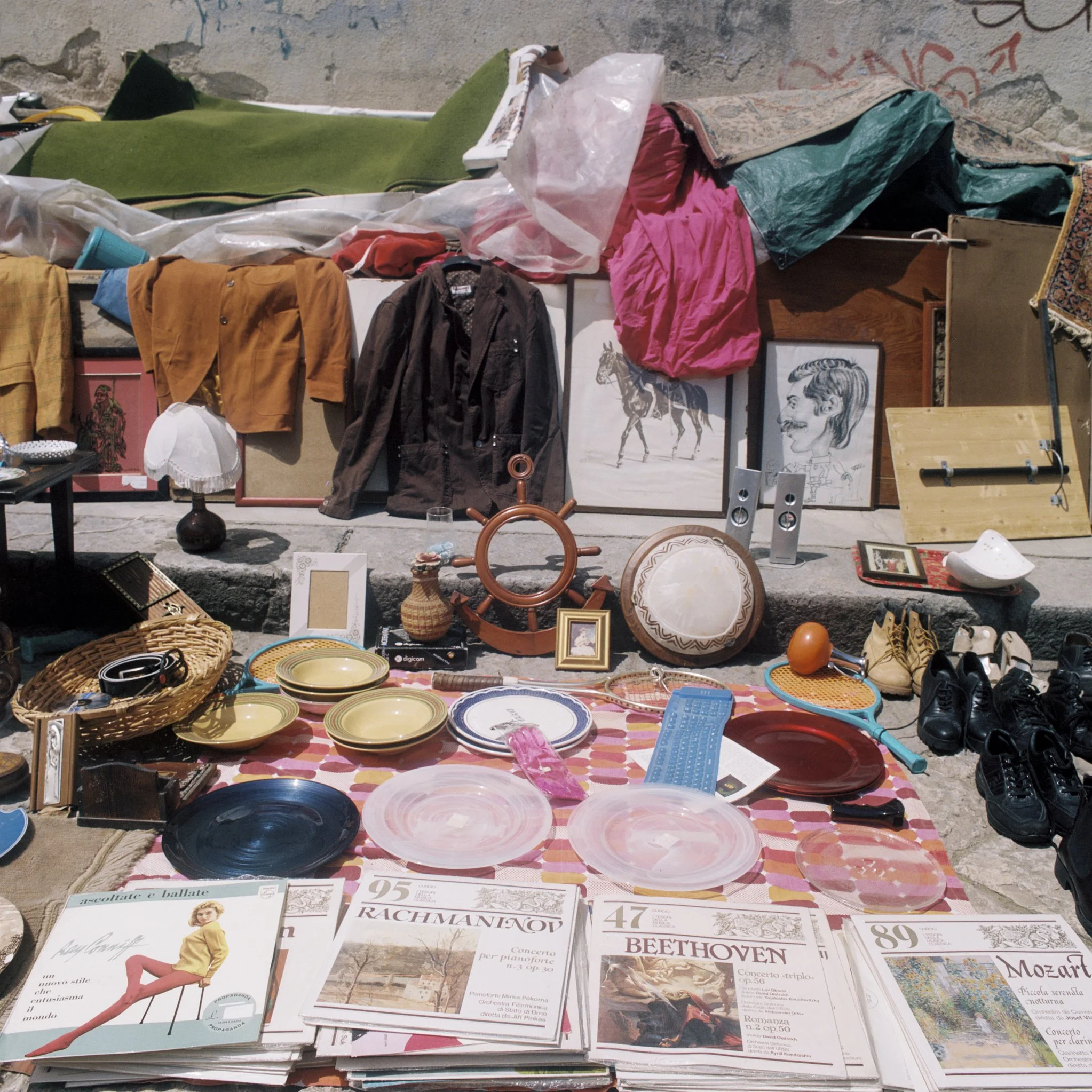This project is about the second-hand market in Albergheria - a peripheral neighbourhood of Palermo’s historical centre.
Albergheria is a semi-informal market where people can exchange memorabilia, tools and trinkets of any sort. Hammers, batteries, old paintings and forgotten dolls can all be found sharing the same stall.
This vibrant neighbourhood represents the last chance for a multitude of old and often faulty objects to remain in Europe, in a city that politically and geographically lingers at the fringes of modern consumerist society.
this market employs hundreds of people. It emerged as an informal activity 30 years ago, as it was an economic opportunity created by the people living on the fringes of Palermo. Today, traders have become an organised community that acts cooperatively to protect their market and their right to work from the normative language of the state that threatens to change the presence of the market.
While for some people this market represents a real alternative economy, based on trade and recycling, for outsiders like myself, this reality felt like an oniric journey into an absurd juxtaposition of objects. A morbid manifestation of consumerism. Whilst immersed in Albergheria, I tried to capture some of the uncanny moments oozing out from the market and its idiosyncratic stalls. As I was walking through the market I could not stop thinking about Calvino’s “Invisible Cities”, when he describes “Leonia” - the imaginary city that renews itself by accumulating and disposing of everything every day.
Albergheria encapsulates many themes that are relevant to the outskirts of modern capitalist cities. Consumerism, inequality, informality, drug addiction, and migrant integration are all clearly tangible elements in this neighbourhood, but they unfold in the context of Palermo, with its unique socio-historical reality. Here, there is still a strong sense of community in the neighbourhoods, and despite some tensions, the impression is to be witnessing an organic and spontaneous welcoming of non-native communities.
This project wants to depict both the absurd market stalls that are a byproduct of consumerism, but it also wants to offer a window into the tiny moments of the life of the people who live in this neighbourhood every day, all through an analogue aesthetic of a camera that is as old as this market.































